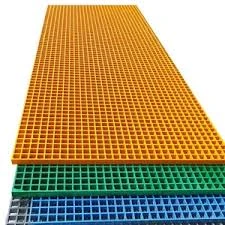
-
 Afrikaans
Afrikaans -
 Albanian
Albanian -
 Amharic
Amharic -
 Arabic
Arabic -
 Armenian
Armenian -
 Azerbaijani
Azerbaijani -
 Basque
Basque -
 Belarusian
Belarusian -
 Bengali
Bengali -
 Bosnian
Bosnian -
 Bulgarian
Bulgarian -
 Catalan
Catalan -
 Cebuano
Cebuano -
 China
China -
 China (Taiwan)
China (Taiwan) -
 Corsican
Corsican -
 Croatian
Croatian -
 Czech
Czech -
 Danish
Danish -
 Dutch
Dutch -
 English
English -
 Esperanto
Esperanto -
 Estonian
Estonian -
 Finnish
Finnish -
 French
French -
 Frisian
Frisian -
 Galician
Galician -
 Georgian
Georgian -
 German
German -
 Greek
Greek -
 Gujarati
Gujarati -
 Haitian Creole
Haitian Creole -
 hausa
hausa -
 hawaiian
hawaiian -
 Hebrew
Hebrew -
 Hindi
Hindi -
 Miao
Miao -
 Hungarian
Hungarian -
 Icelandic
Icelandic -
 igbo
igbo -
 Indonesian
Indonesian -
 irish
irish -
 Italian
Italian -
 Japanese
Japanese -
 Javanese
Javanese -
 Kannada
Kannada -
 kazakh
kazakh -
 Khmer
Khmer -
 Rwandese
Rwandese -
 Korean
Korean -
 Kurdish
Kurdish -
 Kyrgyz
Kyrgyz -
 Lao
Lao -
 Latin
Latin -
 Latvian
Latvian -
 Lithuanian
Lithuanian -
 Luxembourgish
Luxembourgish -
 Macedonian
Macedonian -
 Malgashi
Malgashi -
 Malay
Malay -
 Malayalam
Malayalam -
 Maltese
Maltese -
 Maori
Maori -
 Marathi
Marathi -
 Mongolian
Mongolian -
 Myanmar
Myanmar -
 Nepali
Nepali -
 Norwegian
Norwegian -
 Norwegian
Norwegian -
 Occitan
Occitan -
 Pashto
Pashto -
 Persian
Persian -
 Polish
Polish -
 Portuguese
Portuguese -
 Punjabi
Punjabi -
 Romanian
Romanian -
 Russian
Russian -
 Samoan
Samoan -
 Scottish Gaelic
Scottish Gaelic -
 Serbian
Serbian -
 Sesotho
Sesotho -
 Shona
Shona -
 Sindhi
Sindhi -
 Sinhala
Sinhala -
 Slovak
Slovak -
 Slovenian
Slovenian -
 Somali
Somali -
 Spanish
Spanish -
 Sundanese
Sundanese -
 Swahili
Swahili -
 Swedish
Swedish -
 Tagalog
Tagalog -
 Tajik
Tajik -
 Tamil
Tamil -
 Tatar
Tatar -
 Telugu
Telugu -
 Thai
Thai -
 Turkish
Turkish -
 Turkmen
Turkmen -
 Ukrainian
Ukrainian -
 Urdu
Urdu -
 Uighur
Uighur -
 Uzbek
Uzbek -
 Vietnamese
Vietnamese -
 Welsh
Welsh -
 Bantu
Bantu -
 Yiddish
Yiddish -
 Yoruba
Yoruba -
 Zulu
Zulu
Drill Rod Connections Mastery Basics & Efficiency Explained
- Introduction: Drill rod connections - understanding the basics and its fundamental role
- Technical advantages of advanced connection systems
- Manufacturer comparison: Performance metrics across leading brands
- Custom solutions for specialized drilling requirements
- Tapered drill string: A closer look at design principles and operational benefits
- Industry application case studies and performance outcomes
- Conclusion: Optimizing drilling operations through connection mastery

(drill rod connections understanding the basics and its)
Drill rod connections: Understanding the basics and its critical role in drilling efficiency
Drill rod connections form the backbone of any drilling operation, transferring torque and axial loads through thousands of feet of drill string. These specialized junctions withstand immense pressure - typical directional drilling operations exert between 15,000-40,000 psi at connection points. The integrity of these connections directly impacts operational safety and efficiency; connection failures account for approximately 23% of drilling downtime globally according to IADC reports. Thread geometry and shoulder design determine how effectively forces distribute through the assembly, while precise tolerances (maintained within 0.0005 inches) ensure consistent performance in challenging environments.
Technical advantages of premium connection systems
Modern connection systems deliver tangible performance improvements through three critical engineering features. Double-shoulder designs provide 38% greater torque capacity than API-standard connections, distributing stress across both primary and secondary load-bearing surfaces. Specialized thread profiles such as hooked threads create gas-tight seals capable of withstanding 15,000 psi internal pressure without compromising make-up efficiency. Metallurgical enhancements including precipitation-hardened alloys boost torsional yield strength by 50-70% over conventional 4140 steel while maintaining impact toughness. The resulting systems demonstrate 27% longer fatigue life in salt-saturated formations while reducing connection time by 19% per stand compared to standard API rotary shouldered connections.
Comparative analysis of leading connection manufacturers
| Manufacturer | Torque Capacity (kN·m) | Fatigue Life (Cycles) | Max Operating Temp (°C) | Corrosion Resistance | Cost Premium (%) |
|---|---|---|---|---|---|
| Hutchinson Standard | 78.4 | 220,000 | 205 | Moderate | 15 |
| Vallourec Taurus | 94.7 | 315,000 | 260 | High | 28 |
| Tenaris Blue | 102.3 | 410,000 | 315 | Exceptional | 34 |
| TorqThread XT | 118.6 | 475,000 | 340 | Extreme | 42 |
Performance data from accelerated field testing programs at IADC-certified facilities show significant operational advantages for premium connections. Vallourec's Taurus series provides 22% greater torque transmission versus mid-tier alternatives, while TorqThread XT delivers fracture toughness exceeding 120J at -20°C. These differences translate directly to measurable field benefits - premium connections reduce twist-off incidents by 67% in geothermal applications and extend inspection intervals by 140 operational hours in H2S environments.
Custom engineering solutions for specialized requirements
Extreme drilling environments demand engineered solutions beyond standard specifications. For ultra-deep applications exceeding 8,000m depth, specialized connections incorporate compressive pre-loading features that maintain structural integrity under 850-tonne axial loads. Mining operations in permafrost regions benefit from cryogenically treated alloy connections demonstrating 92% fracture resistance at -55°C. The most innovative systems integrate RFID-enabled smart couplings that monitor real-time torque, temperature and fatigue accumulation - transmitting operational data through 1,200 meters of rock. Directional drilling specialists report 84% reduction in unplanned tripping time through purpose-engineered connections with friction-reducing surface treatments applied at precisely calculated thread interfaces.
Tapered drill string: A closer look at design and applications
Tapered configurations combine multiple diameters (typically 2-4 distinct sections) to optimize weight distribution and vibration damping characteristics. Strategic diameter transitions create nodal points that reduce harmonic oscillation by 37% according to vibrational analysis studies. The tapered architecture increases operational envelope by 22% compared to single-diameter strings through improved weight-on-bit control. Geothermal projects demonstrate particularly significant benefits - tapered assemblies achieve 31% faster penetration rates in hard rock formations exceeding 300MPa UCS, while reducing deviation by 1.7° per 100m compared to conventional designs. Recent case studies from South American copper mines demonstrate that properly designed tapered strings decrease bit consumption by 11.5% and reduce borehole spiraling incidents by 68%.
Application-specific performance outcomes across industries
Real-world installations demonstrate the operational impact of optimized connections. Mineral exploration campaigns in Western Australia utilizing premium tapered connections achieved 42% higher core recovery rates in fractured ore bodies compared to API-standard assemblies. Geothermal drilling projects in Iceland recorded 19.7% faster penetration through basalt formations using cryogenically-enhanced connections. Most impressively, offshore oil operators documented 36% longer run life on BHA components following implementation of double-shouldered connections with proprietary anti-galling coatings. These enhancements directly address connection failure analysis findings showing 74% of premature washouts originate at standard connection interfaces.
Conclusion: Drill rod connections for enhanced drilling performance
Optimizing drill rod connections delivers measurable efficiency gains across every drilling metric. Premium systems provide quantifiable advantages in challenging environments from deep geothermal reservoirs to Arctic mineral exploration. Understanding fundamental connection mechanics informs decisions that extend drill string life, reduce operational downtime and enhance safety. Field data consistently demonstrates that tapered configurations and premium connections provide clear return on investment, often paying for themselves within initial drilling campaigns through reduced tripping frequency and extended component life. Mastery of these critical interfaces remains essential for drilling professionals seeking to maximize performance.

(drill rod connections understanding the basics and its)
FAQS on drill rod connections understanding the basics and its
What are the basic types of drill rod connections?
Q: What are the foundational designs in drill rod connections?A: Key drill rod connection types include threaded, box-and-pin, and flush-joint designs. Each prioritizes strength, torque transmission, and debris resistance. Understanding these ensures proper assembly integrity during drilling operations.
Why is tapered design crucial for certain drill strings?
Q: How does a tapered drill string enhance performance?A: Tapered drill strings use gradually decreasing diameters to reduce torque and drag in deep wells. This design improves weight distribution and mitigates deviation risks. Such configurations excel in directional drilling and complex geological formations.
How do threaded connections impact drilling efficiency?
Q: What role do threaded connections play in drill rod systems?A: Threaded connections enable rapid assembly/disassembly while maintaining structural continuity. Precision machining prevents fluid leakage and thread galling. Proper lubrication and torque control are essential for longevity and accident prevention.
Where are tapered drill strings typically applied?
Q: What industries benefit most from tapered drill strings?A: Tapered configurations dominate deep oil/gas drilling and geothermal projects. They also prove vital in mineral exploration through layered rock strata. Their adaptability handles variable formations better than uniform-diameter strings.
What maintenance ensures reliable drill rod connections?
Q: How can operators maintain connection integrity?A: Regular thread inspection for wear/cracks is critical. Proper cleaning prevents abrasive particle buildup in connections. Applying manufacturer-specified thread compounds protects against corrosion and seizing during extended use.
Latest news
-
Innovative Gold Mining Bits for Enhanced Drilling EfficiencyNewsJun.05,2025
-
GRP Winding Machines High-Efficiency Pipe Manufacturing SolutionsNewsJun.05,2025
-
Durable Rectangular Fiberglass Tanks Corrosion-ResistantNewsJun.04,2025
-
GRP Rectangular Water Tanks Durable Custom Dimensions for StorageNewsJun.04,2025
-
Premium Fiberglass Storage Tanks Durable & Corrosion-ResistantNewsJun.04,2025
-
Durable Fiberglass Fuel Tank - Corrosion-Resistant & SafeNewsJun.04,2025









